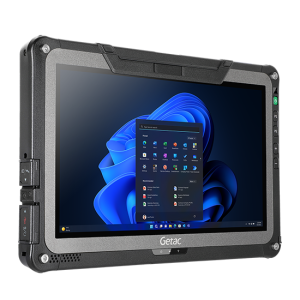
Our weekly round-up of interesting news and background stories on start-ups and innovations in supply chain and logistics. Follow @LogisticsMatter on Twitter to stay up to date on what happens in the industry.
Transportation: Autonomous Vehicles and Electric Vehicles.
A lot of vehicle news this week relates to the transportation of both humans and cargo. Let’s go to self-driving vehicles first.
While two large OEMs back out of a robotaxi project, a Chinese carmaker moves forward.
Argo AI, the self-driving startup backed by Ford and Volkswagen, is shutting down…
Ford placed some of the blame on Argo, noting that the startup has been unable to attract new investors and missed the deadline to roll out a commercial robotaxi product in 2021…
Volkswagen said it was refocusing its efforts on its autonomous driving software subsidiary, Cariad. “Especially in the development of future technologies, focus and speed count…
Argo AI, driverless startup backed by Ford and VW, is shutting down
Chinese luxury EV startup XPeng is moving forward on its plans to launch a robotaxi business…
XPeng attributes its advances in autonomy to its next-generation visual perception architecture, XNet, which adopts an in-house developed deep neural network that delivers visual recognition with “human-like decision-making capabilities, drawing from multiple cameras’ data,” according to the company. XPeng says the neural network technology overrides manual processing logic to constantly self-improve.
China’s XPeng moves closer to launching a robotaxi network
Now on to the electric vehicles. The European Union announced it will ban combustion engine cars as of 2035. It has also set up a task force, together with the United States, tasked with resolving a battery dispute.
The European Union reached a deal to effectively ban new combustion engine cars from 2035, a move that will reshape transportation and mark a significant step on the path to reduce carbon emissions.
The bloc’s three key institutions — its executive arm, the parliament and member states — reached a deal on Oct. 27 that will require carmakers to reach a zero-emission target by 2035. The agreement requires a 55% cut in emissions this decade as the EU sets a course to reach climate neutrality by 2050.
EU to Ban New Combustion Engine Cars as of 2035
Under the Inflation Reduction Act (IRA) passed by the U.S. Congress in August, electric car buyers are eligible for a tax credit of up to $7,500 as long as the vehicle runs on a battery built in North America with minerals mined or recycled on the continent. The EU believes that the measure is a potential trans-Atlantic trade barrier discriminating against foreign producers.
EU, US Set Up Task Force to Resolve Electric Vehicle Feud
And some electric vehicle news from three of the OEMs.
Gaining peak efficiency from two 150-kilowatt fuel cells located below the cabin of the cabover truck is a challenge. The fuel cells operate best at 40% of peak power. Liquid hydrogen cooled to minus 253 degrees Celsius fuels the GenH2. It is two or three times as energy dense as compressed hydrogen gas depending on the compression level.
Adding a 72kW battery pack — 50kW of transient energy — helps reach 1,000 kilometers, or 621 miles of range. Cylindrical cell-encased batteries drive the GenH2 out of park and into traffic where German law sets a 50 kilometer [31 mph] speed limit.
“One of our targets was to find the best split between the fuel cell and the energy provided by the high-voltage battery,” Hofert said. “I could drive either with the fuel cell or with the battery, or nominally with both.
Daimler Truck’s GenH2 is more than just a fuel cell
“We have developed a tool that helps our customers to determine the affordability and economic viability, and the total cost of ownership, of a decarbonized transport solution,” Voorhoeve said. “We’ve taken all these variables and we’ve put them into a model. You can put in all the different variables on energy cost, on maintenance. And then, depending on where you are, the total cost of ownership actually will become competitive somewhere in year four or five when you run the truck.”
Volvo Unveils Total Cost of Ownership Tool for Electric Trucks
Toyota is considering a reboot of its electric-car strategy to better compete in a booming market it has been slow to enter, and has halted some work on existing EV projects, four people with knowledge of the still-developing plans said.
The proposals under review, if adopted, would amount to a dramatic shift for Toyota and rewrite the $38-billion EV rollout plan the Japanese automaker announced last year to better compete with the likes of Tesla.
Exclusive: Toyota scrambles for EV reboot with eye on Tesla
Artificial Intelligence
Three stories jumped out at me this week about artificial intelligence.
The first was about a survey done by IBM.
Almost half (47%) of surveyed CSCOs said they have introduced new automation technologies in the last two years—an approach that can add predictability, flexibility, and intelligence to supply chain operations, and they’re using AI to help monitor and track performance.
Supply Chain Leaders Investing in AI to Navigate Supply Chain Uncertainties
The second one was by fellow blogger Adrian Gonzalez:
Supply sensing complements supply planning using AI to monitor, learn, and adjust plans to current conditions. “It understands and interprets disruptions in the network; it projects the confidence level for getting the right supply at the right time to enable probabilistic planning; it converts these projections into service-level projections across the network to support customer service and experience; and it proactively recommends actions to deal with disruptions,”
Mitigating Supply-Side Service Risks With AI
The third one was on artificial intelligence in customs processes:
We can use artificial intelligence to scan and analyse requests and related documents to assign them to the right expert. This increases the efficiency of our operations…
We can use artificial intelligence to detect errors and analyse these errors. We can use this reactively to get correct data and proactively to improve the data we receive by sharing our findings with customers, so they can improve their data flows and make OCR processes more efficient. Based on the analysis, it can be determined which scans should be checked and what data is suitable to process unchecked.
Artificial Intelligence and How it can Impact Customs Operations
Drones and Robots
Will there be a week that there is no news on drones and robots? Not until they are mainstream and no longer seen as an innovation.
I came across an article that criticizes the use of drones in cities for parcel delivery purposes. The author thinks drones are too loud and they can’t effectively and safely deliver packages. He does have a point. For now I see major advantages for drones when it comes to delivering to remote areas. Last mile delivery in cities, not so much. Then again, we have just started building drones. Who knows what innovations are head of us, that will make last mile drone delivery in a busy city feasible? The author further criticizes drones taxis.
Read more in this article: Drones in cities are a bad idea
Talk about remote / disaster areas:
For residents of Sanibel Island, Florida, there’s only one way in and one way out of town: the Sanibel Causeway bridge.
But when Hurricane Ian devastated the state in late September and early October, that lone access point was destroyed…
Zing Drone Solutions, based locally in St. Petersburg, last week partnered with Los Angeles-based A2Z Drone Delivery and San Rafael, California-based Skyway to deliver on-demand meals, portable chargers and other essentials to residents on the island.
Drones deliver meals to hurricane-impacted Floridians
The Port of Rotterdam is thinking ahead when it comes to drones and occupants of the airspace over the port.
Airwayz supplies the Unmanned Traffic Management system (UTM), which offers air traffic control services for very-low-level (VLL) airspace. These services are used by drone operators and include flight permission and deconfliction services. First of all, it is essential that manned and unmanned flights in the lowest airspace are visualised.
The protocols, procedures, agreements and risk profiles with respect to airspace are drawn up by the Port of Rotterdam Authority as the port manager and by the government as the legislator. This makes the Port Authority the first body in the Netherlands to organise its own airspace to ensure smooth and safe drone traffic.
Digitisation of airspace for the use of drones
Also in the Port of Rotterdam: Drones keeping the port safe.
The Port of Rotterdam will conduct a test with the Avy Aera 3 in, or better said above, the Rotterdam Port Area. The Port Authority aims to make the port safer, smarter and faster with long-range drones.
Drone Manufacturer Avy and Port of Rotterdam Work Together in Test
And the last item in this section on a robotic innovation from Harvard:
The tentacles themselves are just rubber tubes filled with air, but the material is slightly thicker on one side than the other, meaning when the tubes are inflated, they curl in a specific direction, like a beckoning finger. The engineers note that the strength of each individual tube is weak, but combining them together allows Mr. Jelly Hands to grab some pretty heavy objects. Even better, the pneumatic design makes it easy to adjust the force applied, so the design is also capable of grabbing delicate objects without harm.
This robotic tentacle gripper is gentle, practical, and terrifying
Other News
A few other items grabbed my attention:
Photo by Skye Studios on Unsplash
- SEO Powered Content & PR Distribution. Get Amplified Today.
- Platoblockchain. Web3 Metaverse Intelligence. Knowledge Amplified. Access Here.
- Source: https://logisticsmatter.com/start-ups-and-innovations-in-supply-chain-and-logistics-october-24-28-2022/
- 000
- 1
- 10
- 11
- 2022
- 7
- a
- About
- above
- access
- According
- across
- Act
- actions
- actually
- adopted
- advances
- advantages
- against
- Agreement
- agreements
- ahead
- AI
- aims
- AIR
- airspace
- All
- allows
- america
- amount
- analyse
- analysis
- and
- announced
- applied
- approach
- architecture
- AREA
- areas
- Argo
- ARM
- article
- artificial
- artificial intelligence
- attention
- attributes
- AUGUST
- author
- authority
- Automation
- autonomous
- autonomous vehicles
- back
- backed
- background
- Bad
- Ban
- barrier
- based
- batteries
- battery
- become
- believes
- below
- BEST
- Better
- between
- body
- BRIDGE
- Building
- built
- buyers
- capabilities
- capable
- car
- carbon
- carbon emissions
- Cargo
- cars
- Cells
- Celsius
- chain
- challenge
- chinese
- Cities
- City
- Climate
- closer
- combining
- commercial
- company
- compete
- competitive
- conditions
- Conduct
- confidence
- Congress
- considering
- constantly
- continent
- control
- Cost
- could
- course
- credit
- Criticizes
- Current
- customer
- Customer Service
- Customers
- customs
- Cut
- data
- Date
- deal
- decade
- Decision Making
- deep
- deep neural network
- deliver
- delivering
- delivers
- delivery
- Depending
- Design
- Determine
- determined
- developed
- Development
- different
- direction
- disaster
- Dispute
- disruptions
- documents
- dramatic
- drawing
- drawn
- drive
- driving
- drone
- Drones
- each
- Early
- Economic
- effectively
- efficiency
- efficient
- efforts
- either
- Electric
- electric car
- electric vehicle
- electric vehicles
- eligible
- Emissions
- enable
- energy
- Engine
- Engineers
- ensure
- Enter
- Errors
- essential
- essentials
- EU
- European
- european union
- EV
- Even
- executive
- existing
- experience
- expert
- eye
- faster
- feasible
- fellow
- few
- filled
- Find
- First
- Flexibility
- flight
- Flights
- florida
- Flows
- Focus
- follow
- Force
- Ford
- foreign
- Forward
- from
- Fuel
- fuel cells
- further
- future
- GAS
- gentle
- German
- get
- getting
- Go
- Government
- grab
- Half
- Hands
- happens
- harvard
- head
- help
- helps
- How
- HTTPS
- Humans
- hurricane
- hydrogen
- IBM
- Impact
- improve
- in
- include
- Increases
- individual
- industry
- inflation
- Innovation
- innovations
- institutions
- Intelligence
- interesting
- introduced
- investing
- Investors
- IRA
- island
- IT
- items
- Japanese
- keeping
- Key
- knowledge
- large
- Last
- last mile
- Last Year
- Late
- launch
- launching
- Law
- leaders
- LEARN
- Level
- LIMIT
- Liquid
- locally
- located
- logistics
- Long
- longer
- los
- Lot
- Luxury
- Mainstream
- maintenance
- major
- make
- MAKES
- management
- manager
- manual
- Manufacturer
- mark
- Market
- material
- meals
- meaning
- measure
- member
- mined
- minerals
- model
- Monitor
- more
- more efficient
- move
- moves
- moving
- multiple
- Navigate
- Netherlands
- network
- Neural
- neural network
- New
- news
- next-generation
- North
- north america
- objects
- OCR
- Oct
- october
- Offers
- ONE
- operate
- Operations
- operators
- Other
- own
- ownership
- Pack
- packages
- Park
- parliament
- partnered
- passed
- path
- Peak
- People
- perception
- performance
- permission
- PETERSBURG
- plan
- planning
- plans
- plato
- Plato Data Intelligence
- PlatoData
- Point
- potential
- power
- Practical
- pretty
- procedures
- process
- processes
- processing
- Producers
- Product
- Profiles
- project
- projections
- projects
- Proposals
- protocols
- provided
- purposes
- put
- Rafael
- range
- reach
- reached
- receive
- recognition
- recommends
- reduce
- related
- remote
- requests
- require
- requires
- residents
- resolving
- Reuters
- review
- Risk
- risks
- robotaxi
- robots
- Roll
- rubber
- Run
- safe
- safely
- safer
- Said
- San
- scan
- Second
- Section
- self-driving
- self-driving vehicles
- September
- service
- Services
- set
- Sets
- sharing
- shift
- should
- significant
- slow
- smarter
- So
- Software
- solution
- Solutions
- some
- somewhere
- specific
- speed
- split
- St. Petersburg
- start-ups
- started
- startup
- State
- States
- stay
- Step
- Stories
- Strategy
- strength
- subsidiary
- suitable
- supply
- supply chain
- supply-side
- support
- Survey
- surveyed
- system
- Target
- targets
- Task
- task force
- tax
- tax credit
- Technologies
- Technology
- Tesla
- test
- The
- the cabin
- the Netherlands
- The State
- their
- themselves
- Thinking
- Thinks
- Third
- this week
- three
- time
- times
- to
- together
- too
- tool
- Total
- toyota
- track
- trade
- traffic
- transport
- transportation
- truck
- u.s.
- u.s. congress
- under
- understands
- union
- United
- United States
- Unveils
- us
- use
- vehicle
- Vehicles
- viability
- Visual recognition
- volkswagen
- vw
- week
- weekly
- What
- which
- WHO
- will
- without
- Work
- work together
- would
- XPENG
- year
- zephyrnet












